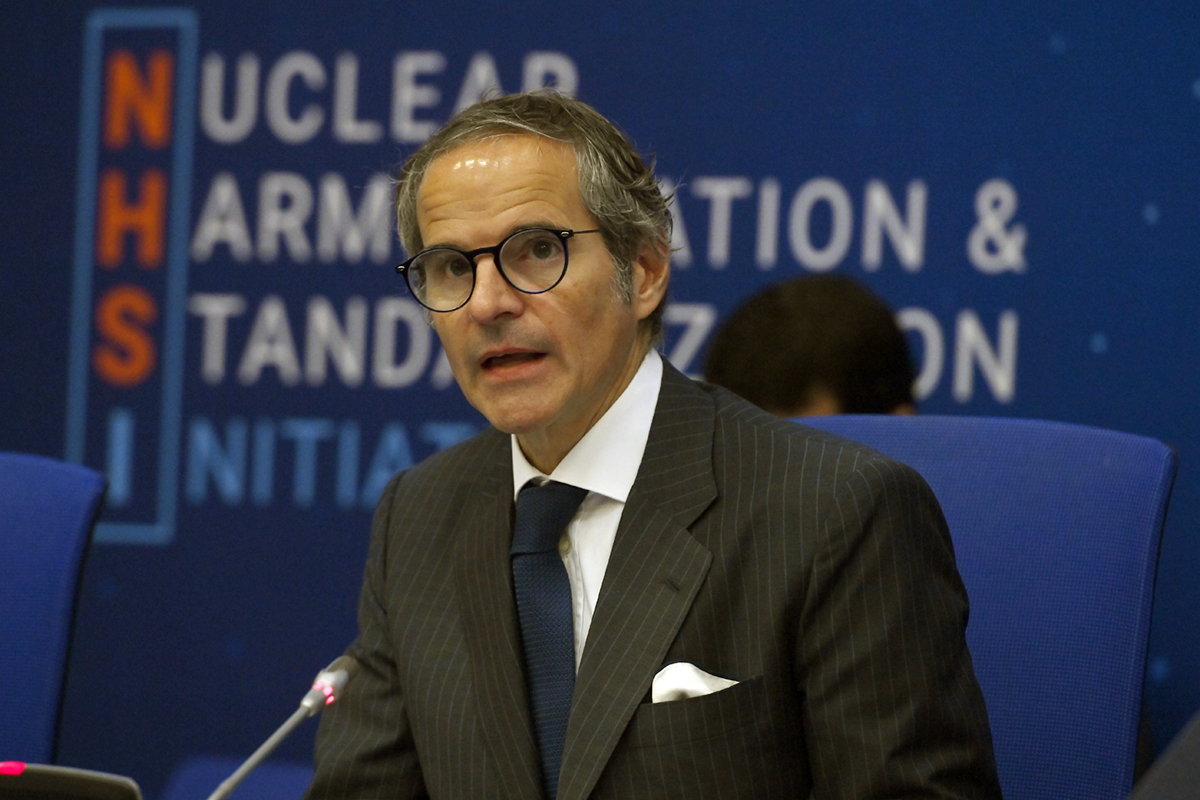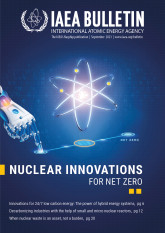
If you would like to learn more about the IAEA’s work, sign up for our weekly updates containing our most important news, multimedia and more.
Our innovative journey towards a net zero world
Rafael Mariano Grossi

As we face the mounting consequences of climate change and the imperative need for sustainable development, nuclear power is increasingly being recognized as a reliable solution for supporting our transformation to a net zero world.
Nuclear energy capacity will need to more than double from current levels if global climate goals are to be met. However, our current energy technology will not suffice. Half of the carbon dioxide emission reductions needed to reach net zero in 2050 will have to come from technologies not yet on the market. That is why technical innovation is so important. Nuclear industry experts agree that boosting manufacturing and fuel production capacity, as well as harmonizing regulatory approaches, will be critical for the deployment of the next generation of nuclear reactors.
“ With the urgency of mitigating emissions and improving energy security around the world, the significance of nuclear power cannot be underestimated, and neither can the innovations that will help us realize its full potential.
With the urgency of mitigating emissions and improving energy security around the world, the significance of nuclear power cannot be underestimated, and neither can the innovations that will help us realize its full potential — from novel reactor designs that exceed efficiency benchmarks to the integration of artificial intelligence into nuclear power plant life cycle solutions. Beyond electricity generation, nuclear reactors are already used for seawater desalination, and there is significant potential for further non-electric applications. This Bulletin offers an overview of these innovative developments with input from leading experts.
There is growing interest in small modular reactors (SMRs), advanced nuclear reactors that typically generate up to 300 MW(e). SMRs look set to broaden global access to nuclear energy because they are more suitable for small electricity grids and more easily integrated with renewable energy sources. That makes them a potential solution for developing countries, many of which have shown interest in understanding the technology better. There are more than 80 SMR designs in various stages of development in 18 countries, with SMR units already deployed in China and the Russian Federation, and one design under construction in Argentina. The IAEA Platform on Small Modular Reactors and their Applications, as well as the IAEA’s Nuclear Harmonization and Standardization Initiative, play important roles in supporting the deployment of safe and secure SMRs worldwide.
At last year’s United Nations Climate Change Conference (COP27), I launched Atoms4NetZero. It provides countries and stakeholders with technical expertise and scientific evidence on nuclear energy to decarbonize electricity production, as well as hard-to-abate sectors such as industry and transport. The initiative helps to model how nuclear power can contribute to reducing net greenhouse gas emissions to zero by 2050.
It is clear: to meet global emissions targets, we need nuclear energy. Success will depend on the continued operation of many existing plants; the construction of more large traditional nuclear power plants; and the deployment of advanced reactors, including SMRs. That will require further innovation and collaboration along every point of the fuel cycle. The IAEA will continue to play its unique role in facilitating both so that nuclear can play its part in creating a thriving world that doesn’t cost us the planet.

